Mixing layers between a uniform flow and a shear flow
Context
Turbulent fluid flows involved in environmental or industrial applications are complex. In fluid mechanics laboratories, canonical turbulent shear flows have been studied for many years and a relatively clear picture of their underlying structure exists. However, the direct applicability of these efforts to real relevant flows, which often occur in complex geometries and in the presence of multiple non canonical influences, like cross-shear and spanwise non-uniformity, is still unknown.
Description
We have addressed the analysis and modelling of non canonical turbulent mixing layers between a uniform flow and a linear shear flow. These flows were investigated by numerical and experimental approaches.
From a parametric study by bidimensional direct numerical simulations two mixing layer configurations between a uniform flow and a shear flow were selected. Then, the two flow configurations were studied with cross hot-wire anemometry. The budget of the turbulent kinetic energy was estimated from the experimental data and a spectral analysis was performed. Our goal is to understand the underlying physical mechanisms leading to vorticity spreading or inhibition.
Furthermore, since the linear shear flow was obtained with a curved screen, a preliminary study was necessary to model the shape of the screen as a function of the parameters of the flow.
Results
Flow through a curved screen
A curved screen was used to control the velocity distribution of the fluid flow. The goal was the production of a linear velocity profile from uniform conditions upstream fo the screen (see figure below).
 |
On passing through an inclined screen, the fluid is locally deflected towards the normal of the screen and its static pressure is reduced. These two connected physical mechanisms are characterized by the deflection parameter (B) and the resistance coefficient (K).
Nevertheless, the model proposed in the literature, derived from the equations of the physics of fluid, failed to predict the shear parameter (lambda) when considering large values of the screen inclination (theta), of the solidity fo the screen (sigma) and/or small values of the Reynolds number (Re). Indeed, though both theoretical and semi-empirical attemps have been made to establish the exact form of the relationship beetwen K and B, no entirely satisfactory expression has been proposed. This is not only due to assumptions, e.g. in the validity domain of some parameters, but also and mainly due to a lack of knowledge in the deflection of the flow towards the normal of the screens. The evaluation of the deflection coefficient used to present considerable difficulties arising from the measurements techniques combined with the rippled nature of the screens.
In the present study the particle image velocimetry technique (PIV) was used to investigate the flow in the vincinity of the screen. This approach has allowed the modeling of the deflection parameter (B),
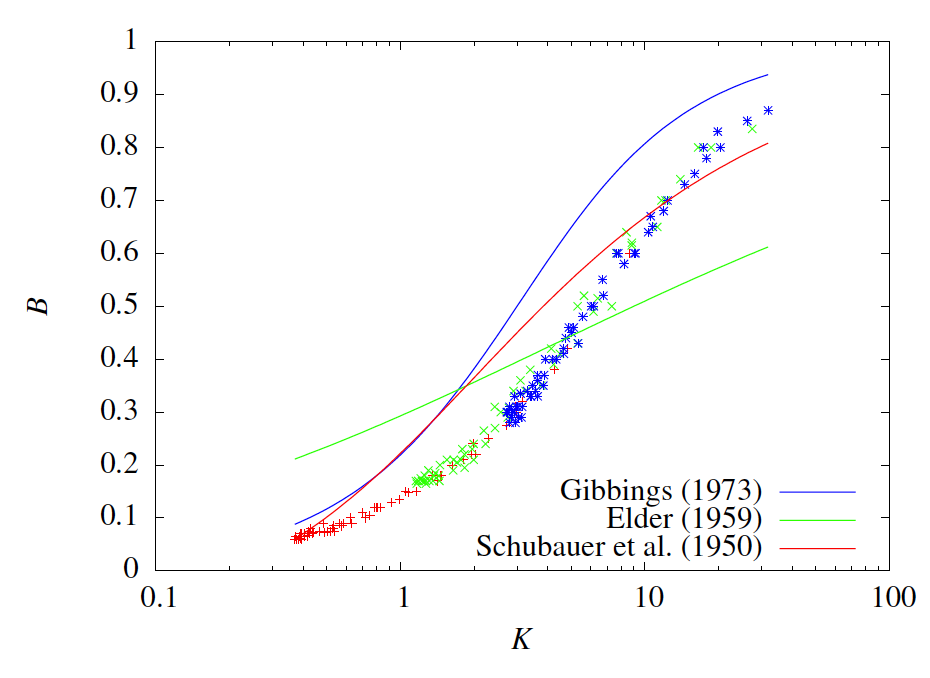 |
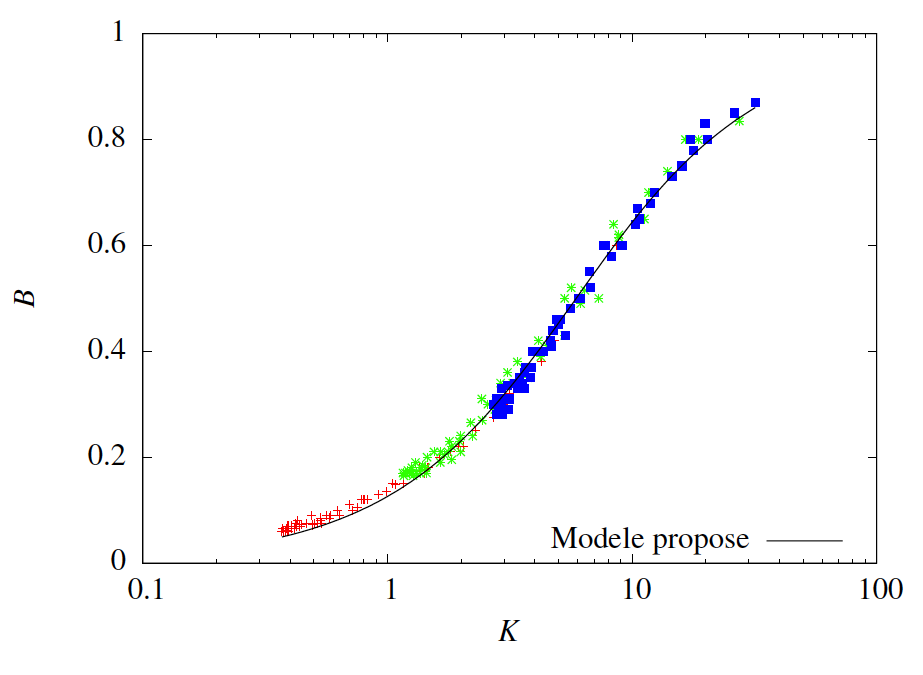 |
| Models in the literature | Semi-empirical proposed model |
but also the modeling of the shear parameter λ characterizing the production of a linear velocity profile from uniform conditions upstream fo the screen. The figure below shows the general model and comparisons with PIV measurements.
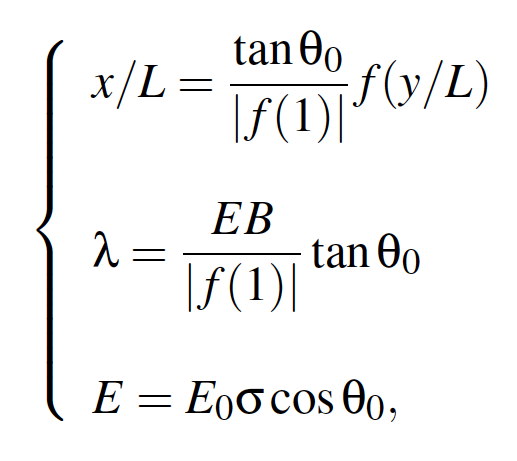 |
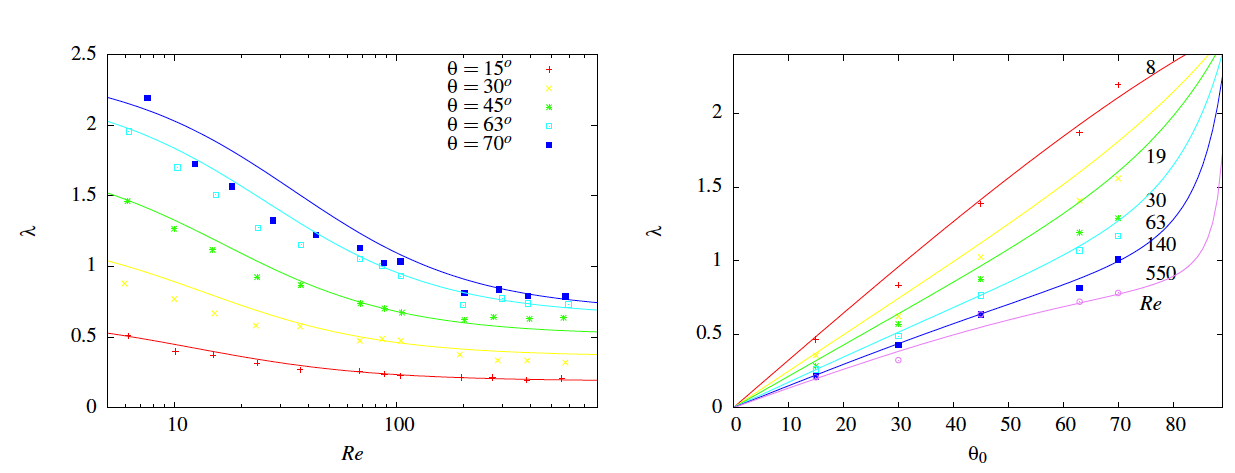 |
| General proposed model | Semi-empirical proposed model compared to PIV measurements |
Non-canonical mixing layers - 2D DNS
From a parametric study by bidimensional direct numerical simulations (DNS) two mixing layer configurations between a uniform flow and a shear flow have been selected: one enhancing the spreading of the mixing layer called MLA and the other inhibiting the spreading of the mixing layer called MLB.
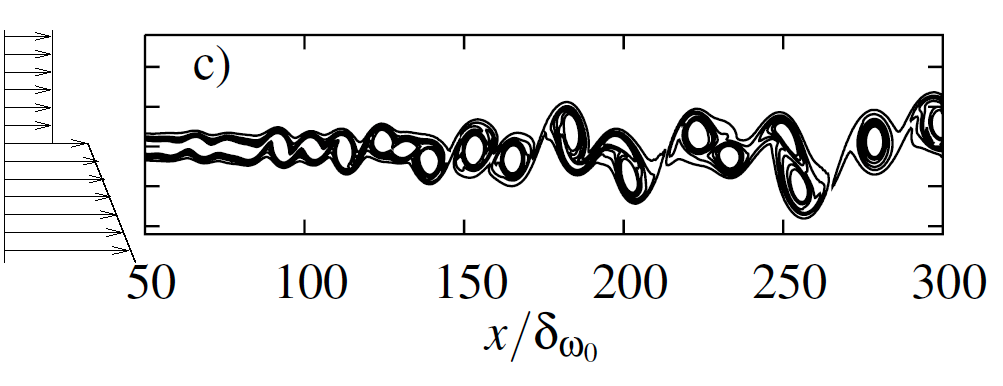 |
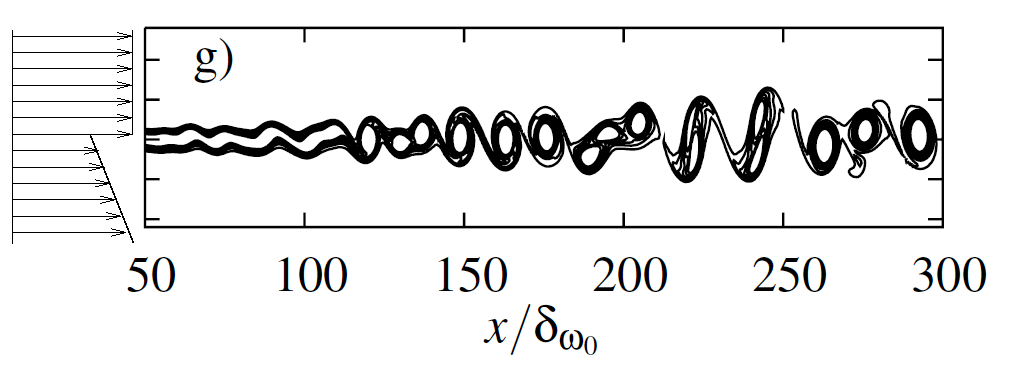 |
| Isocontour of the vorticity in the MLA | Isocontour of the vorticity in the MLB |
Non-canonical mixing layers - hot-wire measurements
From hot-wire measurements turbulence and energy budget have been analyzed in the two mixing layer configurations. Comparisons with classical mixing layers show that MLA behaves like a mixing layer with increasing energy as the flow proceeds downtsream, while MLB behaves like a dissymmetric wake flow.
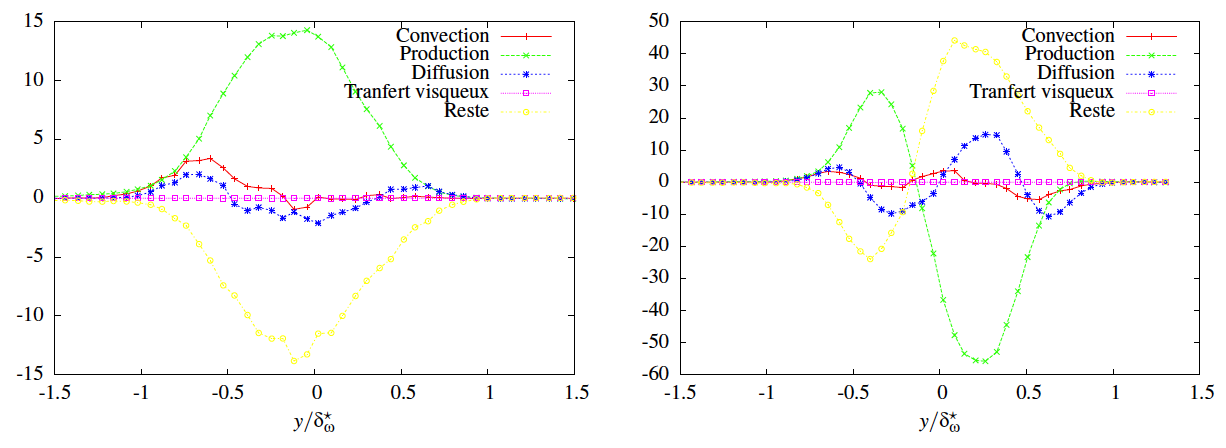 |
| Budget across MLA (left) and MLB (right) for u'v' |
Spectral densities of velocity v' across the two mixing layers, presented in the figure below, clearly indicates the footprint of dissymetric vortex street with higer energy in the upper side of the flow (uniform flow side).
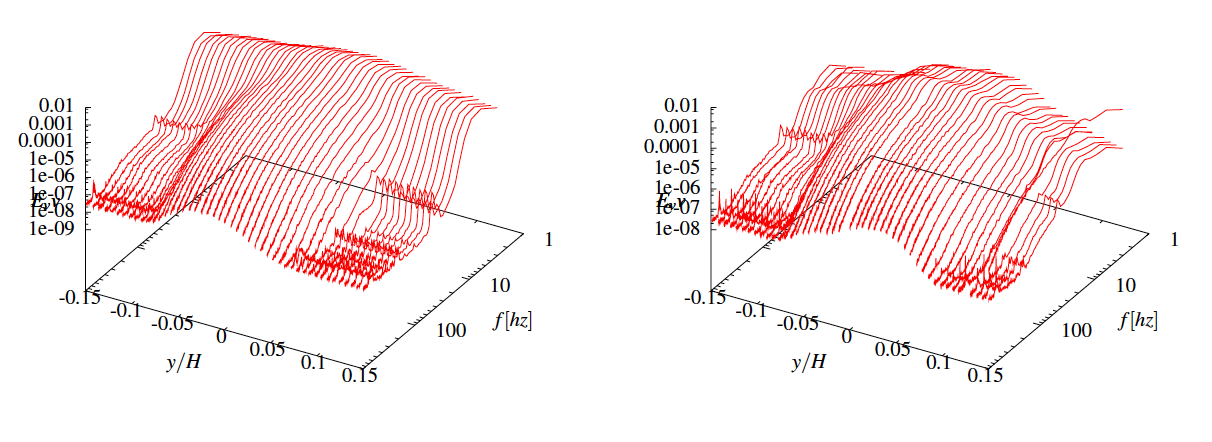 |
| Energy spectra across the mixing layer for MLA (left) and MLB (right) |

